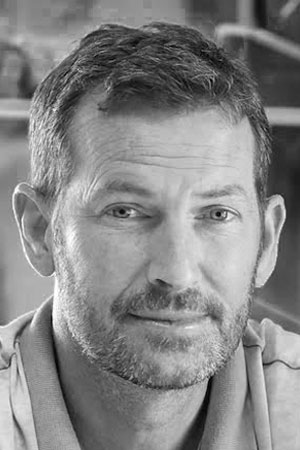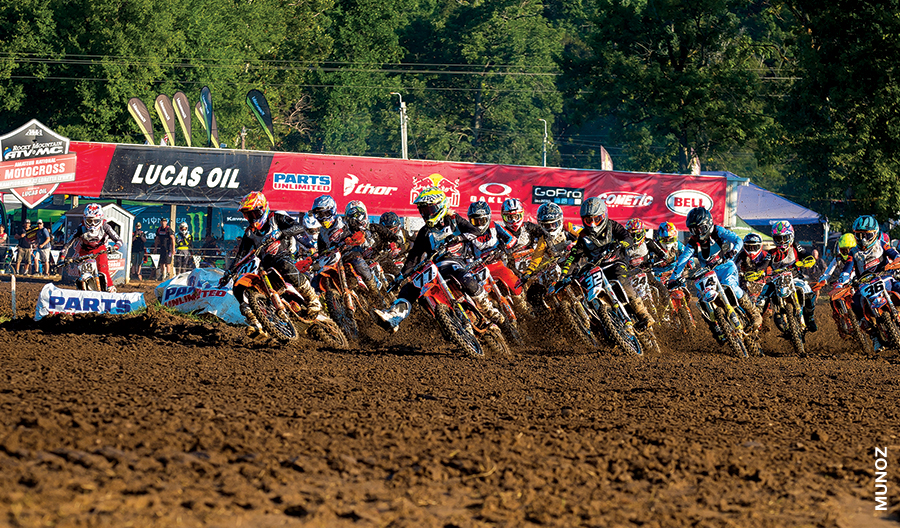



ight years ago at Loretta Lynn’s I was standing in the grass near the impound area, just off the far outside of the start stretch. I was giving a tour of the event and the race to KTM North America’s Jon-Erik Burleson and John Hinz along with some of the KTM brass who had flown over from Europe to check out the world’s biggest amateur race. They wanted to see for themselves what they were up against as they prepared to retool their amateur support program—at the time, they weren’t in a good place as far as U.S. market share went.


At Loretta Lynn’s, KTM had fewer than 200 bikes entered in all classes combined, the vast majority in the 51cc and 65cc junior minicycle classes. (There wasn’t a single Husqvarna entered in the race, as the once-proud Swedish brand would not be revived until KTM purchased it a year later.)
The first moto of the Supermini 1 (12-15) class was on the starting gate, with a total of two KTMs in the 42-rider race. Jon-Erik asked me who to watch for and I pointed to the #92 Kawasaki on the far outside. It was 15-year-old Adam Cianciarulo from Port Orange, Florida, who had drawn #42 from the bucket—the last gate pick. No matter, everyone following amateur motocross back then knew he was the next big thing, so he was an easy pick for the win.
When the gate dropped, Adam executed everything perfectly. His reflexes gave him a fighting chance for a good start, even from the far outside. He got his feet on the pegs, his weight off the back on the rear fender, and then with full commitment he went through the gears and held it wide open all the way around the first turn. It was one of the best holeshots I’ve ever seen at the Ranch, and from there, he just disappeared from everyone else. Once again, Kawasaki’s vaunted Team Green amateur support program was paying off in spades. One of the Europeans said, “Maybe we should talk to #92.” I told them it was too late—Kawasaki already had him in the pipeline that would take him from Team Green to Monster Energy/Pro Circuit Kawasaki.
Kawasaki won 12 AMA Amateur National titles in 2011, four times as many as KTM. But after watching for a couple days, the KTM folks went home and went to work on retooling their amateur program in this country. Their motto was “Ready to Race,” and they knew they needed to invest in younger amateur prospects if they were going to be competitive at the professional level here. They also knew they had to have someplace for the kids to land when they turned pro, so they snatched up Bobby Hewitt’s Rockstar Energy 250cc satellite team from Suzuki, then the Troy Lee Designs team from Honda. (Rockstar Energy would go from orange to white after KTM transferred the team to Husqvarnas.)
Fast-forward to 2019, and we see a much different picture. KTM’s investment in the sport has paid off handsomely. Their bikes are competitive with the Japanese offerings at every level. KTM/Husqvarna have now won five straight Monster Energy AMA Supercross titles. At Loretta Lynn’s, they won 17 of the 36 class titles, with a market share of nearly 50 percent across all sizes of motorcycles. And that Supermini 1 (12-15) class that Kawasaki Team Green’s Cianciarulo won in 2011? This time there were just two green bikes on the line, and a whopping 32 out of 42 bikes in the class were built in Austria, including every bike in the top ten.
Kawasaki is still formidable—they just won both Lucas Oil AMA Pro Motocross Championships—including the 250 Class title, finally, for Cianciarulo—as are the other Japanese OEMs. But it’s now obvious that KTM’s “Ready to Race” mantra has made the Austrians the new powerbrokers in the U.S. dirt bike market. ![]()

